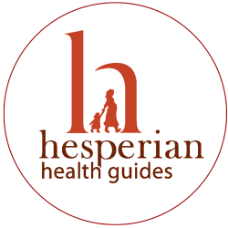Dr. Zafrullah Chowdhury, an internationally known public health leader from Bangladesh whose organization, Gonoshasthaya Kendra, was one of the first to translate and adapt Where There Is No Doctor, passed away on April 11, 2023.
Zafrullah Chowdhury and the staff of GK have remained friends and colleagues with the staff of Hesperian for half a century. We send our deepest condolences to his family, colleagues, and friends.
Born in East Pakistan on December 27, 1941, A.T.M. Zafrullah Chowdhury studied medicine at Dhaka Medical College. In 1971, while he was training in vascular surgery in the United Kingdom, civil war broke out between East Pakistan and West Pakistan. Zafrullah, with other East Pakistanis who had been calling for independence for years, joined the struggle for the liberation of Bangladesh. Zafrullah helped to establish a field hospital, the Bangladesh Hospital, in India, to care for casualties from the fighting. With no nurses available, the doctors trained dozens of young women refugees from the strife inside then-East Pakistan to provide care for the field hospital’s patients. Most of the young women had little more than a high school education, and certainly no previous medical training, but they learned the basics of medical caregiving rapidly and well. This became an important learning experience for Zafrullah and the other doctors on the field hospital’s staff.
“We started to realize that the more education you have, the more you will think that education is needed to do the simplest things. This is one way we close the door to the poor. To be a doctor, you need 20 years of education and training; it takes 3 or 4 years after 10 years of basic schooling to be a nurse. Poor people are seldom able to pursue many years of schooling, and by requiring that, we do not allow them to enter into our professional arena.”
Inadvertently, Zafrullah realized later, the Bangladesh Hospital had “experimented with a new cadre of health workers who would not only transform Third World health systems but also influence health care systems in the western world.”
In 1972, after the bloody civil war had concluded, Zafrullah and colleagues founded Gonoshasthaya Kendra (which means People’s Health Center), known as GK, in rural Bangladesh, where they continued training many more of the “new cadre” of community health workers. These community health workers, called “paramedics,” provided primary health care to people in the surrounding villages.
In a constant search for ways to better serve the poverty-stricken community, Chowdhury recognized in a copy of Where There Is No Doctor, “the world’s first demystification of health care.” In 2013, when reminiscing about first encountering the medical care manual written in easy-to-understand language and illustrated with simple, cartoon-like illustrations, he remembered thinking, “‘God, this is what we are looking for!’”
GK translated the text into the local language, Bangla, adapting the text and illustrations for use by the paramedics in the field and in GK’s hospital and medical care. That is how one of the first field tests, translations and adaptations of Where There Is No Doctor came to be in Bangla, the language of Bengal, the region encompassing Bangladesh and India’s West Bengal.
GK later translated other Hesperian texts into Bangla, notably Where Women Have No Doctor. GK continued to work with Hesperian on other topics, most recently on Occupational Health and Safety for the mostly women garment workers in Bangladesh’s largest export industry..
GK’s work was showcased as a model of primary health care delivery at the 1978 World Health Organization conference in Alma Ata (today’s Almaty), Kazkhstan. Over the next few decades, the primary health care movement may have lost steam internationally, but GK helped rekindle interest by hosting the first and the fourth People’s Health Assemblies, and serving as the first location of the Secretariat of the People’s Health Movement (PHM), a movement to achieve Health for All by strengthening primary health care. Hesperian Health Guides is a PHM member and attended that founding meeting at GK in 2000.
Zafrullah was also the principal architect of Bangladesh’s 1982 National Drug Policy, which banned the production and sale of drugs deemed dangerous or unnecessary, and promoted the production of drugs on the World Health Organization’s list of “essential” medicines, by Bangladesh-owned producers. The policy earned Chowdhury the enmity of the multinational pharmaceutical companies, but promoted local pharmaceutical industry and became an international example of effective regulation of pharmaceuticals.
Today, community health workers are common around the world, and Chowdhury and GK have been recognized internationally for their leadership. Among these recognitions: the Ramon Magsaysay Award in 1985; the Right Livelihood Award (sometimes called the Alternative Nobel Prize) in 1992; and the Public Health Hero in 2002 by UC Berkeley’s School of Public Health.
Today, GK provides health care to hundreds of thousands of individuals throughout Bangladesh. The organization has developed a pharmaceutical factory, hospitals, a medical school, a publishing company, affordable health insurance, and numerous other programs, especially those providing alternative occupations for women. Zafrullah Chowdhury lived to make Health for All a reality, and along with GK we commit to carry that inspiration forward.

 A new edition of “Where Women Have No Doctor” for a new generat...
A new edition of “Where Women Have No Doctor” for a new generat...
